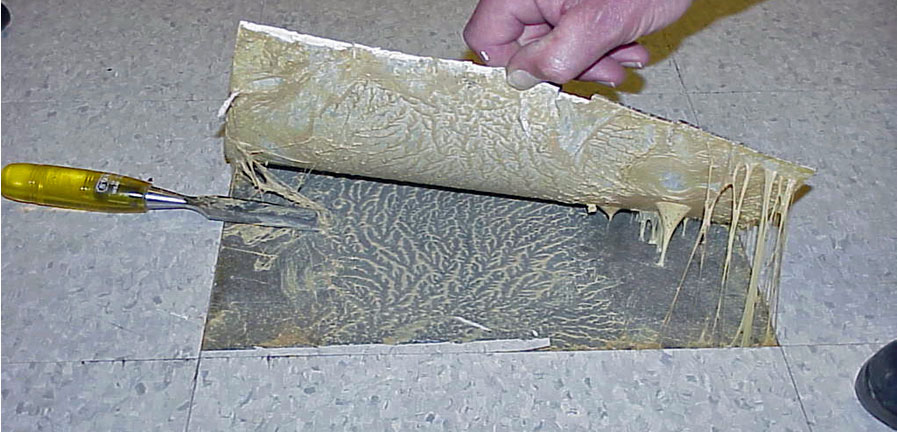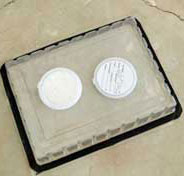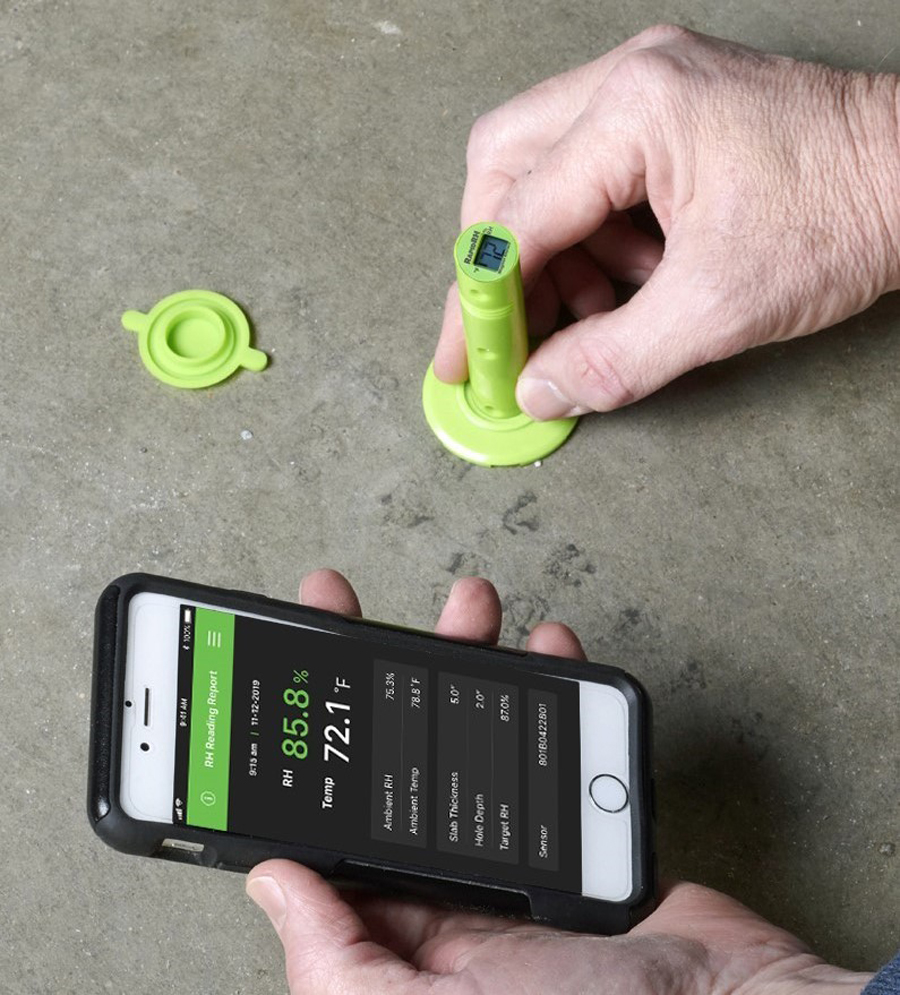How Deep Do I Need to Measure Moisture in Concrete?
You don’t want a flooring failure simply because you didn’t bother to accurately assess the amount of moisture within the concrete slab. But is there a preferred depth for measuring moisture in a concrete substrate?

Don’t take chances with concrete moisture because it could wreak havoc with your flooring installation.
Why You Can’t Rely on Surface Measurements
Some people assume that it’s perfectly acceptable to test moisture at or near the surface of the concrete. Nothing could be further from the truth. Surface readings can be highly misleading and unreliable.
One reason is that ambient conditions significantly affect concrete. Warm temperatures and low relative humidity (RH) in the air will draw moisture from the slab’s surface. If you only evaluate surface moisture, you might conclude that the concrete is dry when conditions deeper down likely tell an entirely different story.
Conversely, in a cool, moist environment, the concrete will tend to absorb moisture from its surroundings. This means a surface measurement could indicate that the slab is wetter than it really is.

Surface-based readings of concrete moisture can be misleading because they are highly influenced by ambient conditions.
Clearly, a surface measurement won’t do. That being the case, where and how do you take proper moisture measurements?
To answer this question, it’s essential to understand something about the role of moisture and how it behaves within the concrete.
How Moisture Interacts with a Concrete Substrate
First, no concrete floor slab is ever truly dry. Water, cement, and rock aggregate comprise the three main ingredients in concrete. In fact, without sufficient water in the mix, the concrete won’t achieve the level of strength and durability that makes concrete an esteemed construction material.
Second, when the concrete substrate dries after the initial pour, it does not dry uniformly. Water vapor must evaporate from the surface for the drying process to occur. This creates a moisture gradient in which significantly more moisture is found deeper in the concrete than at or near the surface. That will typically be the case until the concrete is sealed with an impermeable finished floor product.
Once you install the flooring, the concrete’s moisture gradient will largely disappear, with the deep-down moisture rising and yielding more moisture at the surface to interact with the floor.
This begs the question: how can you know in advance how much moisture will be available at the slab’s surface once you install the floor?
Science Leads the Way
Fortunately, scientists have asked this very question. Studies back in the 1990s at Lund University in Sweden and elsewhere reveal the answer. Their studies show that moisture readings taken at 40 percent of the depth of the slab (for concrete drying from one side), and 20 percent depth (for concrete drying from two sides) give a reliable indication of the amount of moisture the floor will “see” after installation.
For example, when assessing a five-inch thick slab drying from one side, you will want to drill a test hole and place an RH sensor two inches (40 percent) deep into the concrete.

In-situ RH testing gives you moisture measurements at the correct depth for an accurate, reliable moisture assessment.
Today, this method of concrete moisture testing, known as in-situ RH testing, has become the gold standard. ASTM International (formerly the American Society for Testing and Materials) has developed guidelines, known as ASTM F2170, for conducting the test properly. With the ASTM standard to guide you, you’re assured of accurate, reliable test results to help you make the best decision about when the concrete is dry enough for a successful flooring decision.
Why Moisture Matters
Just so you won’t dismiss the importance of conducting an accurate moisture test, we should emphasize that a concrete substrate is hygroscopic, meaning it acts like a giant sponge. It will readily absorb or release moisture depending on the conditions around it. If there’s excessive moisture in the concrete, you are pretty much guaranteed moisture-related flooring problems with the floor covering.
On the other hand, if you perform an in-situ RH test per the ASTM standard and follow manufacturer guidelines about when to install floor coverings, coatings, and adhesives, you minimize the risks. In nearly every case, you will have effectively bought yourself a cheap insurance policy, guaranteeing that you won’t run into headaches due to moisture in the concrete.
For more information about moisture in concrete, or to learn about the popular Rapid RH L6 concrete moisture test by Wagner Meters, visit www.wagnermeters.com.
Previously published in The Flooring Contractor magazine